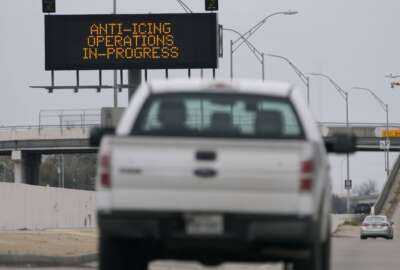Cardin: Scaling back USPS service to save money ‘counterproductive’
There are a number of proposals to put the cash-strapped Postal Service on firmer financial ground. But Sen. Ben Cardin (D-Md.) says many of them would reduce the...
wfedstaff | June 4, 2015 5:58 pm
There are a number of proposals to put the cash-strapped Postal Service on firmer financial ground. But Sen. Ben Cardin (D-Md.) says many of them would reduce the service levels the public has come to expect and further drive away business.
Most people who mail a letter to a nearby neighbor expect the missive to be received the next day, Cardin said. But plans to reduce the number of distribution centers would make that an “impossible task,” he added.

“I want to see the distribution centers remain open,” Cardin told In Depth with Francis Rose. “I want to see the service levels remain the way they should. I think that will be the framework for a more efficient system because you need people to use the Postal system.”
‘Right-sizing’ or ‘wholesale closings’?
Earlier this month, USPS released an updated five-year business plan that included closing half of its mail-processing centers, more than 3,000 local post offices and cutting its workforce by about 155,000 positions.
However, lawmakers across party lines remain divided over the proposal and others like it. Rep. Darrell Issa (R-Calif.), the chairman of the House Oversight and Government Reform Committee, concurred with the “right-sizing” plan, calling it “essential to solving the Postal Service’s financial crisis.”
Similarly, Sen. Tom Carper (D-Del.) said USPS needs to begin having a “real conversation” about closing local postal facilities.
But Cardin has been among the most adamant against cutting USPS service levels — including ending Saturday delivery. Cardin joined two dozen other senators in signing a letter to the Senate subcommittee Carper chairs to stop “wholesale closings” of rural post offices and mail-sorting facilities.
Cutting service levels and increasing the time it takes to deliver mail is “counter-productive,” Cardin said, because it will only drive more customers away from the Postal Service and agency revenue will continue to decline.
“The way to save money is to have a more efficient system … There are ways in which we can put the system on a more cost-effective plan,” he said. He cited ending the pre-funding of employee health and retirement programs as one area of cost-savings.
Cardin also voiced support for allowing USPS to take its health insurance system in-house. USPS is being “overcharged,” he said, “which means that they’re being penalized for a system that they could do a lot cheaper.”
RELATED STORIES
USPS says piecemeal approach to cost-savings plan won’t do
USPS to shutter, consolidate more than half of mail-processing centers
Carper: USPS can take page from auto industry in fixing finances
Postal Service plan proposes own health plan, workforce cuts
Postal Service’s plan to close post offices hits roadbumps
Copyright © 2025 Federal News Network. All rights reserved. This website is not intended for users located within the European Economic Area.





